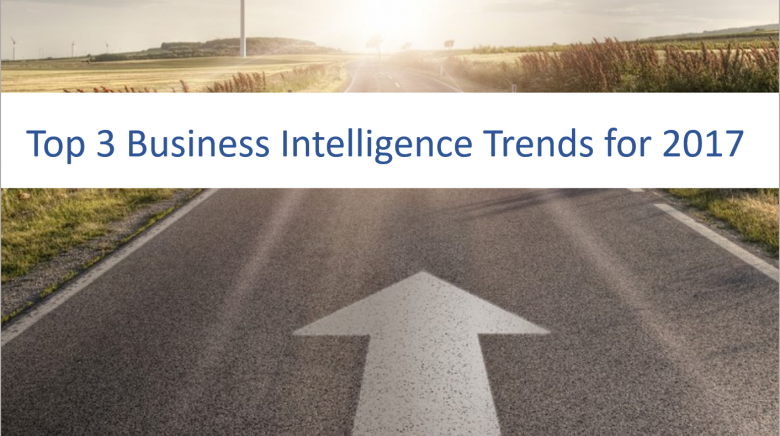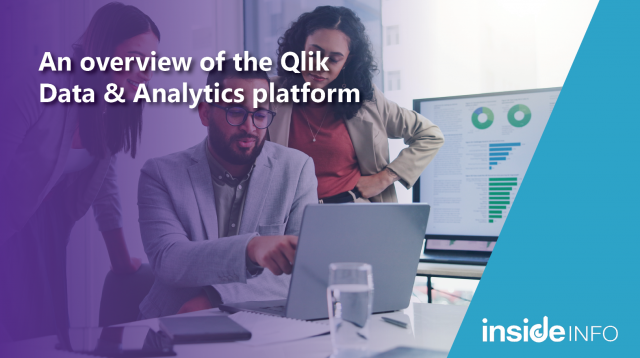The Top 3 Business Intelligence Trends To Watch In 2017

In 2016, we saw yet another strong year for businesses with many new Business Intelligence (BI) trends emerging, including more thorough data collection methods from varied sources, the rise of embedded analytics and faster analytical processes to support more agile decision making.
What will be the biggest BI trends to watch over the coming 12 months?
It's likely that 2017 will be another big year. How will business intelligence solutions evolve this year improve further than they have already, offering companies new avenues to greater productivity and more robust profits? Here's our view on three key developments that will be especially important for businesses to take advantage of.
1. Personal analytics, collaborative insight
Constantly expanding links between enterprises, customers and other stakeholders opens up infinite opportunities to create business value from data and analytics. BI and analytics remain among the top technology areas identified as spending priorities once again by CIOs in Gartner's 2017 CIO Agenda Survey.
This year we will see an increased appetite for more advanced analytics that can answer deeper questions, fostering more intuitive data interrogation, along with the need for collaborative capabilities within applications that are supported by governance. Self-service BI software like the Qlik platform address all of these demands. Research by Aberdeen has shown that collaborative analytics speeds up decision making by 46% and delivers 42% better customer response times. BI tools will continue to invest in improving their collaborative capabilities where any individual (not just analysts) can easily create their own business dashboards or analyses, advocating more personalised analytics experiences, but in an environment that encourages sharing of ideas and stories across teams and departments for faster decision making.
2. Driving change with customer data
Customer empowerment will demand a great deal of focus this year and the years that follow. Organisations must be prepared to prioritise, build up and support such initiatives with digital and analytics solutions. According to Deloitte's CIO Survey, 75% of respondents say investments in business operations data are the top priority over the next two years, followed closely by customer data at 63%.
In its Predictions for 2017 report, Forrester Research notes that this growth in customer empowerment is putting an end to stability and predictability in customer engagement, and placing many changes outside of an organisation's control. However, the ability to anticipate and respond to consumer trends will play a major role in business success.
These empowered customers are driven by a constantly increasing number of devices and information sources, a need for recognition, and a culture that encourages experimentation. In 2017, expect firm-wide operational changes to focus on the customer experience - as well as a shift where business models focus more on specific customer journeys. Our recent article about Amazon Go's new technology-driven, physical store concept is one example of this, taking advantage of IoT capability such as sensors, digital cameras and mobile technology, to uncover a much deeper level of insight into customer behaviour while reshaping the retail grocery shopping experience.
Analytics will play a key role in this changing dynamic by molding the customer experience through insights and embedded analytical capabilities provided to customers themselves.
3. Enhanced data integration & consolidation
Improving enterprise agility continues to be a top priority. Improvement is inherently linked to profitability and better understanding impacts and pathways for growth through BI. Large enterprises encounter challenges with maintaining profitability because they cannot effectively access and utilise data for either long-term planning or short-term decisions. BI tools this year will continue to enhance data integration capabilities to assist to this end. CIO's will embrace Agile methodologies for faster delivery of their BI projects and use BI to make operational decisions that drive speed and agility across the enterprise.
However, data sources for analytics will remain varied and abundant. The popularity of augmented reality (AR) applications, such as Pokemon GO, will help bring AR into the mainstream. While another area of focus to improve decision making will be in integrating financial, sales and operational data to provide better performance information for aligning forecasts with business plans.
There's no doubt 2017 will be another year where data will differentiate businesses and be a source of value. This is underpinned of course by smart use of business intelligence software to tailor customer experiences, deliver timely management insight and pave the way forward.






